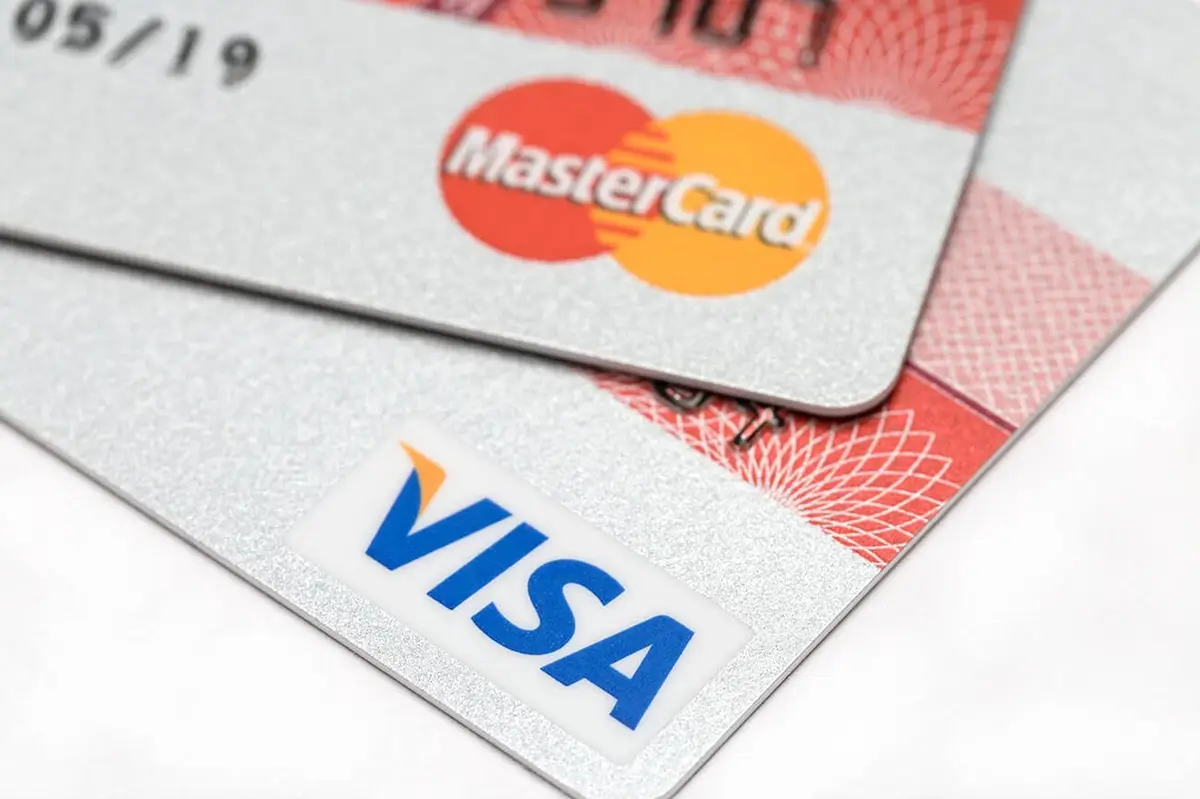The Simple Guide to Accepting Credit Card Payments and Boosting Your Sales

Are you a business owner looking to boost your sales and attract more customers? One effective way to do just that is by accepting credit card payments. In today’s cashless society, customers expect the convenience and security of paying with their cards, and by providing this option, you open your doors to a whole new segment of potential buyers.
But where do you start? How do you navigate the complex world of credit card processing? Don’t worry, we’ve got you covered. In this simple guide, we will walk you through the process of accepting credit card payments, from choosing the right payment processor to ensuring your customers’ data is secure.
We will also explore the different types of credit card readers available, including traditional point-of-sale systems and mobile options, so you can find the best fit for your business. Whether you own a brick-and-mortar store or run an online shop, accepting credit card payments has never been easier. So, let’s get started on boosting your sales and taking your business to the next level!
The Importance of Accepting Credit Card Payments
In today’s digital age, accepting credit card payments is no longer just a convenience; it’s a necessity. Customers are increasingly relying on their credit and debit cards for everyday purchases, and businesses that fail to provide this option risk losing out on valuable sales opportunities.
Accepting credit card payments allows you to tap into a larger customer base. By offering a convenient payment method, you can attract customers who prefer to use their cards for security, convenience, and rewards. This opens up opportunities to reach new customers and boost your sales.
Furthermore, accepting credit card payments can help you establish credibility and trust with your customers. When you offer a secure and reliable payment method, customers are more likely to view your business as professional and trustworthy. This can lead to increased customer loyalty and repeat business.
Finally, accepting credit card payments can also streamline your business operations. With electronic payments, you no longer have to worry about handling and counting cash, which can be time-consuming and prone to errors. Instead, the funds are automatically deposited into your account, saving you time and effort.

How Credit Card Payments Can Boost Your Sales
Accepting credit card payments can have a significant impact on your sales. Studies have shown that customers tend to spend more when paying with a credit card compared to cash. This is because credit cards provide a sense of “buy now, pay later” that can encourage impulse purchases and larger transactions.
Furthermore, accepting credit card payments can help you attract customers who may not have enough cash on hand to make a purchase. By providing the option to pay with a credit card, you remove the barrier of limited funds and open up your business to a wider range of customers.
Credit card payments also offer convenience for both you and your customers. With electronic payments, there’s no need to worry about handling and depositing cash at the bank. The funds are automatically transferred to your account, allowing you to focus on running your business.
Additionally, accepting credit card payments can improve your cash flow. With faster payment processing, you can receive funds from your sales more quickly, allowing you to reinvest in your business, pay suppliers, and meet other financial obligations more efficiently.
In summary, accepting credit card payments can boost your sales by increasing customer spending, attracting a wider customer base, providing convenience, and improving your cash flow. Now, let’s dive into the details of how to accept credit card payments for your business.
Understanding the Different Types of Credit Card Payment Processors
Before you can start accepting credit card payments, it’s important to understand the different types of credit card payment processors available. These processors act as intermediaries between your business and the credit card networks, facilitating the secure transfer of funds.
There are two main types of credit card payment processors: traditional merchant account providers and third-party payment processors. Traditional merchant account providers require you to set up a dedicated merchant account with a bank, while third-party payment processors offer a more streamlined, all-in-one solution.
Traditional merchant account providers are usually better suited for businesses with high transaction volumes and complex payment needs. They offer more customization options and can provide additional services such as recurring billing and multi-currency support. However, they often require a lengthy application process and may have higher fees.
On the other hand, third-party payment processors are ideal for small businesses and startups. They offer quick and easy setup, often with no application or setup fees. These processors handle all aspects of payment processing, including security and customer support. However, they may have higher transaction fees and limited customization options.
When choosing a credit card payment processor, consider factors such as your business size, transaction volume, budget, and specific payment needs. Research different providers, compare their features and fees, and choose the one that best fits your business requirements.
Choosing the Right Credit Card Payment Processor for Your Business
Now that you understand the different types of credit card payment processors, it’s time to choose the right one for your business. Here are some factors to consider when making your decision:
- Fees: Compare the transaction fees and any additional fees charged by different processors. Look for transparent pricing and ensure that the fees align with your budget and projected transaction volume.
- Security: Security is of utmost importance when handling credit card payments. Look for processors that comply with industry standards and offer features such as encryption and tokenization to protect your customers’ data.
- Integration: Consider how the payment processor integrates with your existing systems. If you have an online store, check if the processor has an easy-to-use plugin or API that can seamlessly integrate with your website. For brick-and-mortar stores, ensure that the processor is compatible with your point-of-sale system.
- Customer Support: Make sure the payment processor offers reliable customer support. In case of any issues or questions, you want to be able to reach out to a knowledgeable support team for assistance.
- Additional Features: Some payment processors offer additional features such as inventory management, reporting, and analytics. Consider whether these features would be beneficial for your business and factor them into your decision-making process.
By carefully considering these factors, you can choose a credit card payment processor that meets your business’s unique needs and sets you up for success in accepting credit card payments.
Setting Up a Merchant Account for Credit Card Payments
If you decide to go with a traditional merchant account provider, the next step is to set up a merchant account. A merchant account is a type of bank account that allows you to accept credit card payments and have the funds deposited into your business bank account.
To set up a merchant account, you will typically need to provide the following information:
- Business details: This includes your business name, address, contact information, and legal structure (e.g., sole proprietorship, LLC, corporation).
- Financial information: You may be required to provide financial statements, tax returns, and bank statements to assess your business’s financial stability.
- Processing history: If your business has an existing processing history, you may need to provide statements from your current payment processor to demonstrate your transaction volume and chargeback ratio.
- Personal information: As the account owner, you will need to provide your personal information, including your Social Security number or Employer Identification Number (EIN).
Once you have gathered all the necessary information, you can begin the application process with the merchant account provider of your choice. This may involve completing an online application, submitting the required documents, and undergoing a review process.
It’s important to note that the application process for a merchant account can take some time, ranging from a few days to a few weeks. Be prepared to provide any additional information or documentation requested by the provider during the review process.
Integrating Credit Card Payment Options on Your Website
If you operate an online store, integrating credit card payment options on your website is essential for providing a seamless and convenient checkout experience for your customers. Here are the steps to follow:
- Choose an E-commerce Platform: If you don’t already have an e-commerce platform, select one that suits your business needs. Popular options include Shopify, WooCommerce, and Magento.
- Select a Payment Gateway: A payment gateway is a service that securely authorizes credit card transactions between your website and the payment processor. Research and choose a payment gateway that integrates well with your chosen e-commerce platform.
- Set Up the Payment Gateway: Follow the instructions provided by the payment gateway to set it up on your website. This usually involves installing a plugin or copy-pasting code snippets onto your website.
- Test the Integration: Before going live, test the credit card payment integration to ensure that transactions are being processed correctly. Make a test purchase using a dummy credit card to verify that the payment process is working smoothly.
- Communicate Security Measures: Display trust badges and communicate the security measures you have in place to reassure customers that their credit card information is safe and secure.
By following these steps, you can seamlessly integrate credit card payment options into your website, providing a convenient and secure checkout experience for your customers.
Ensuring the Security of Credit Card Transactions
Ensuring the security of credit card transactions is crucial for protecting your customers’ sensitive information and maintaining their trust. Here are some best practices to follow:
- Use SSL Encryption: Secure Socket Layer (SSL) encryption is essential for protecting the transmission of credit card data between your website and the payment processor. Ensure that your website has an SSL certificate installed, which can be obtained from a trusted certificate authority.
- Implement Tokenization: Tokenization is a process that replaces sensitive credit card data with a unique token. This ensures that even if your system is compromised, the actual credit card information remains secure. Check if your payment processor offers tokenization as part of their security measures.
- Comply with PCI DSS: Payment Card Industry Data Security Standard (PCI DSS) is a set of security standards designed to protect cardholder data. Make sure your business complies with the PCI DSS requirements by following the prescribed security measures.
- Regularly Update and Patch Systems: Keep your website, payment gateway, and other systems up to date with the latest security patches and updates. This helps protect against known vulnerabilities that could be exploited by hackers.
- Train Employees on Security Practices: Educate your employees on the importance of security and train them on best practices for handling credit card information. This includes not storing sensitive data, using strong passwords, and being vigilant against phishing attempts.
By implementing these security measures, you can minimize the risk of data breaches and ensure the safety of your customers’ credit card information.
Optimizing the Checkout Process for Credit Card Payments
To maximize conversion rates and provide a positive user experience, it’s important to optimize the checkout process for credit card payments. Here are some tips to follow:
- Keep It Simple: Streamline the checkout process by minimizing the number of steps required to complete a purchase. Remove unnecessary form fields and only ask for essential information.
- Provide Guest Checkout: Offer the option for customers to check out as guests, without having to create an account. This reduces friction and allows for a faster checkout process.
- Autofill Information: Use autofill functionality to automatically populate customer details, such as name and shipping address, based on the information provided during previous purchases.
- Display Progress Indicators: Clearly indicate the progress of the checkout process by displaying a progress bar or step indicators. This helps customers understand where they are in the process and reduces confusion.
- Offer Multiple Payment Options: While credit card payments are important, consider offering alternative payment options such as PayPal, Apple Pay, or Google Pay. This gives customers more flexibility and can increase conversion rates.
- Provide Clear Error Messages: If a credit card transaction fails, provide clear and concise error messages that explain the issue and suggest possible solutions. This helps customers troubleshoot and complete their purchase successfully.
By optimizing the checkout process for credit card payments, you can reduce cart abandonment rates and improve the overall customer experience.
Tracking and Analyzing Credit Card Payment Data
Once you have started accepting credit card payments, it’s important to track and analyze the data to gain insights into your customers’ purchasing behavior and optimize your sales strategies. Here are some key metrics to track:
- Conversion Rate: Measure the percentage of website visitors who complete a purchase. By monitoring the conversion rate, you can identify areas for improvement in your sales funnel.
- Average Order Value: Calculate the average amount customers spend per transaction. This metric can help you identify opportunities to upsell or cross-sell products and increase your revenue.
- Customer Lifetime Value: Determine the average value a customer brings to your business over their lifetime. This metric helps you understand the long-term profitability of your customer base and tailor your marketing strategies accordingly.
- Abandoned Cart Rate: Track the percentage of customers who add items to their cart but fail to complete the purchase. By analyzing the reasons behind cart abandonment, you can implement strategies to recover lost sales.
- Popular Products and Categories: Identify the products or product categories that generate the highest sales volume. This information can help you optimize your inventory management and marketing efforts.
By tracking and analyzing these metrics, you can make data-driven decisions to optimize your sales strategies, improve customer retention, and drive business growth.
Conclusion: Unlocking the Potential of Credit Card Payments for Your Business
Accepting credit card payments can significantly boost your sales and attract a wider customer base. By providing the convenience and security customers expect, you can tap into the growing cashless economy and maximize your business’s potential.
In this guide, we have explored the importance of accepting credit card payments, the different types of credit card payment processors, and the steps to integrate credit card payment options into your website. We have also discussed the importance of security, optimizing the checkout process, and tracking and analyzing payment data.
Now armed with this knowledge, you are ready to take the next step in accepting credit card payments and unlocking the potential for your business. Remember to choose a payment processor that suits your needs, ensure the security of transactions, and continuously optimize your sales strategies based on data insights.
So, what are you waiting for? Start accepting credit card payments today and watch your sales soar to new heights!




